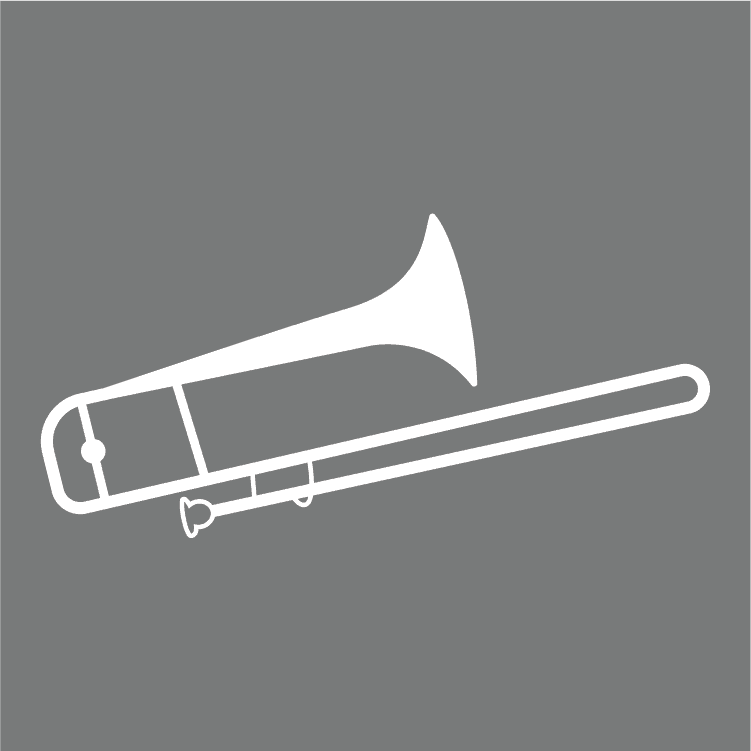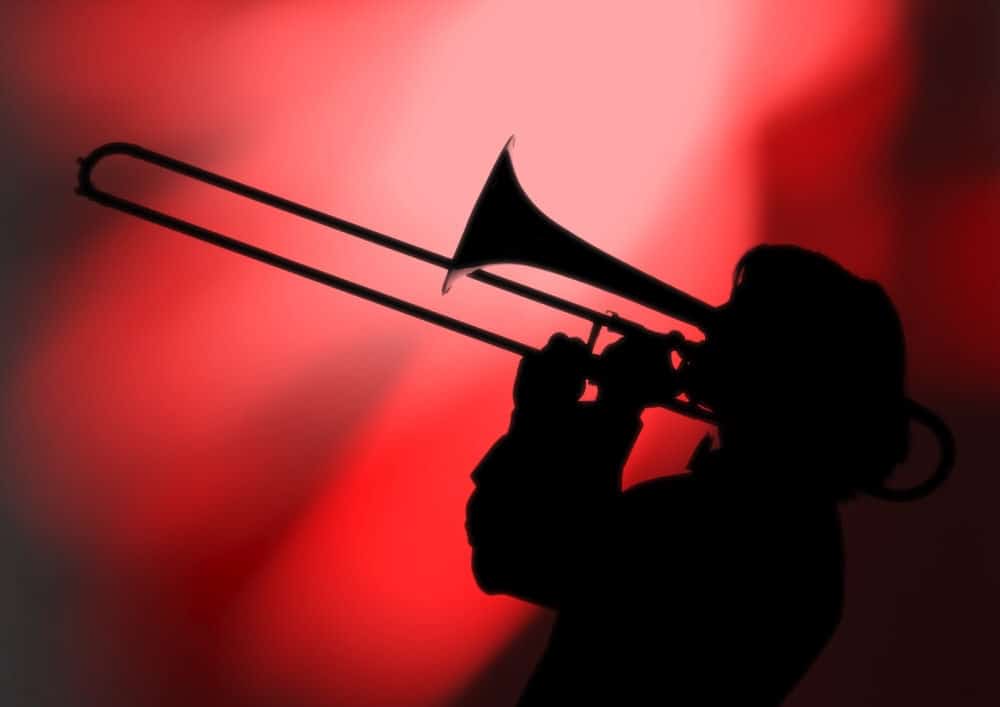how to play the Trombone
What is the next element of figuring out how to play the Trombone?

Making a Sound
To make a sound on any brass instrument requires a vibration between the lips. This is called the buzz. In order to produce this buzz, you must first form your lips (or embouchure) into the correct position:
Position a pencil so it is supported between your lips and resting on your upper teeth; remove the pencil but hold that position; keep the teeth exactly where they are, blow air through the gap left by the pencil and close the lips just enough to produce a buzz. This is your basic embouchure.
Forming your embouchure will become second nature. But always remember these three rules:
Keep the corners fixed
Keep the chin flat
DO NOT SMILE
To make a sound on the instrument you need two things: a vibration (from your buzz) and air.
Take a breath and perform your buzz into the instrument. You will be rewarded with a lovely, rich sound coming out of the other end of the instrument. It is now time to learn the positions.

Slide Positions
There are only seven positions on the trombone: the first position is fully closed and seventh position fully extended. The five positions in-between are roughly 3 inches apart – in actual fact the positions gradually increase in distance as you move down the slide. Most beginners use the bell, halfway down the slide as a visual guide – right-hand level with the bell is roughly third position (but try not to actually touch the bell with your fingers) – you learn to move between positions through developing muscle memory.
In order to achieve more than these seven notes, you need to first understand that brass instruments are built around the harmonic series. Within each position, there is a range of possible notes which are achieved through the tightening or relaxing of your embouchure (or buzz). With time this not only gives you a huge range, but it also allows you to play the same note in a number of different positions – we call these alternate positions.
You can use this website for your reference.
Here are your first tasks…
Slow chromatic scales
These are the best way to practise your slide technique and check that you are in exactly the right position for each and every note.
Basic flexibilities
Moving from one note to another in the same position is one of the hardest things you can do on the trombone. Practice makes permanent.
Hymn tunes
Once you have a few notes ‘under the slide’ as we say, you can quickly put them together to form a tune. Simple melodies, or hymn tunes, are great to practise; be as musical and expressive as possible.
How To Play the Trombone - Summary
By now, you should be able to:
- Produce a proper sound
- Know about slide positions
Now it’s time to improve your technique…
About the Author
Matthew Gee
After starting his career in the opera pits of Scotland, Chile and Yorkshire, Matthew took up positions with the Royal Philharmonic and Aurora Orchestra almost simultaneously. A love for contemporary music and chamber ensemble playing grew, largely through his work with Aurora, which now makes for an interesting portfolio career alongside teaching at the Royal Academy of Music and working with the brass septet Septura. Having said all that, he would swap it in an instance to play cricket for England.
Other posts by this author
What Compelling Musical Things Have I Discovered In The Week?
Did you lose out last Friday? It only occurs once weekly, and unless you’re enrolled, you’ll not learn about the spectacular stuff I’ve found for you this week.
At the end of the week, I’ll give you an email with all the cool items I’ve uncovered.
Music and songs. Artists. Products. Equipment.
Touring the globe being a musician means I get to experience things you wouldn’t believe, and sharing it with you makes a charming end to your week. Sign up cost-free beneath.
Read the next post in this series:




